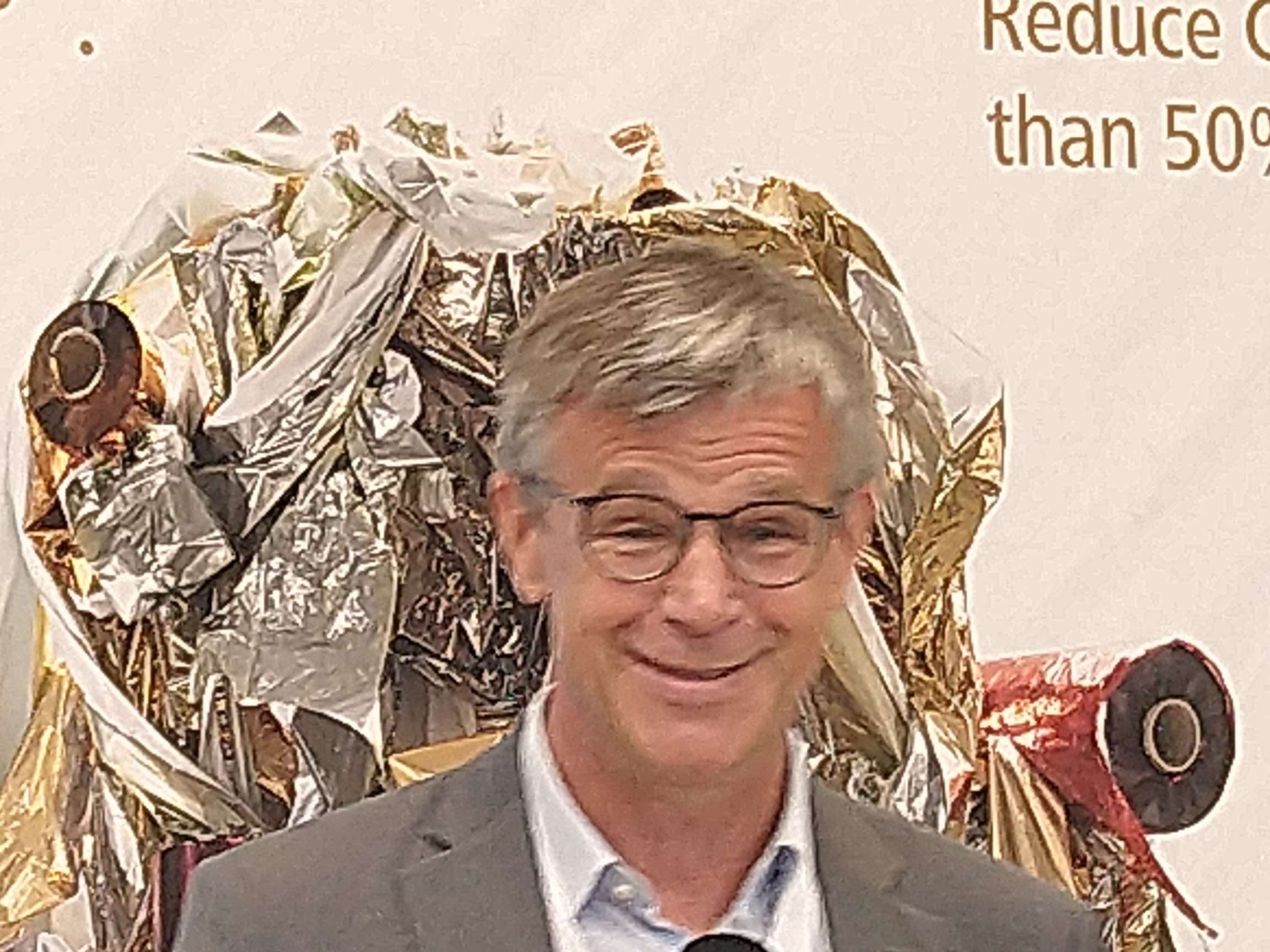
In early July, Actega, an Altana company, introduced a new metallisation technology. Unlike conventional cold or hot foil technology, this is based on printing metal flakes directly onto the print media - from foils to paper - using a trigger layer.
ECOLEAF is a compound word made up of Eco for ecological - in English ecological - and Leaf which means leaf or flakes. So we are talking about ecological flakes - but what do they have to do with metallisation in printing?
The patented process ensures that tiny metal flakes adhere to the corresponding substrates. According to Actega, for a very long time. This "magic" metallisation ensures a lasting refinement of the print projects.
Exact metallisation effects
But first to the process: First, an invisible, print varnish-like trigger image is printed with the areas that are to have the metallisation. This is then UV-irradiated and hardened. In the subsequent metallisation unit, a very thin layer of metal pigments is applied to an applicator roller and then transferred to the trigger image. The metal flakes adhere to the trigger layer and only to this. The rest of the image repels them so that by means of a closed-loop circulation system these non-adhering flakes can be reused. Drying or curing after application of the metal layer is not necessary.
Thus, the metal effect is only created in the areas that are to have the metallisation. Even the smallest or thinnest lines, texts and image areas can be metallised in high resolution. In rotary or flatbed printing, for example, tactile effects can be created without embossing. Since the ECOLEAF process is suitable for flexo and screen printing as well as for rotary and flatbed printing and inkjet printing, a range of metallic finishes can be achieved depending on the printing process used. In flexo printing, this means that even very fine metallised lines can be printed at the highest resolution. Seamless metallisation for short run lengths characterises the solution in inkjet printing.
With the new process, both overprinting and underprinting can be carried out, which leads to a wide range of colour effects. According to Actega, the perfect reflection of the super-flat monolayer ensures outstanding quality that does not shy away from comparison with traditional metal foiling. The ECOLEAF metallisation unit can be integrated into existing production lines, but can also be operated offline.
Sustainable printing
In contrast to traditional metallisation solutions, the Closed Loop process ensures sustainable printing. The thousands of foils and PET liner papers that end up in landfills or incinerators every year with hot and cold foil technology are a thing of the past. According to Actega, the new process also eliminates the 50 to 80 per cent PVD that remains unused on the films when they are disposed of.
Initial calculations from ACTEGA's life cycle assessment show an extremely positive impact on sustainability and resource savings. ECOLEAF technology currently achieves a reduction in carbon footprint of more than 50 per cent compared to hot and cold foil.
When you look at this in a wider context, the benefits become even clearer. According to Actega, one kilogram of ECOLEAF flakes effectively replaces 3,000 kilograms of film, which in turn avoids 20 tonnes of CO2e: the equivalent of planting around 833 trees. For an average-sized label converting company, this can represent a very significant contribution to reducing CO2e impact. These values can easily be shared with brand owners, helping them to build their carbon footprints, and if applied on a large scale across the industry, the potential impact on reducing the effects of climate change would be significant.
No wonder, then, that the sustainability footprint of printers, as well as their customers, can be reduced so significantly.
Indirect food contact
ECOLEAF can be used for a wide range of media in a variety of packaging and labelling segments, including indirect food contact products. The ecological flakes and its components comply with REACH and EuPIA regulations and are approved for use in packaging production. This means that they do not contain any substances from the updated SVHC (Substances of Very High Concern) list in an amount > 0.1 per cent.
ACTEGA has also worked with Interseroh's recycling experts and achieved full certification in relation to PP/PE/PET labels. When analysing whether ECOLEAF is magnetisable or conductive, it was found that the metallisation of ECOLEAF has no effect. When analysing the degree of detectability of ECOLEAF metallisation on the target surface material after a NIR sorting procedure, it was found that no effect of ECOLEAF metallisation was detected.
New standard of metallisation
At the world premiere in Lehrte, Germany, CEO Dr Stefan Plenz emphasised that Actega wants to establish the ECOLEAF process as the new standard for metallisation in printing. As a major step forward from the current industry standard, it offers sustainability coupled with a technological leap that significantly saves costs, production time, materials and waste.
The company will introduce the new process worldwide - country/region by country/region - and offer support. Dr Stefan Plenz expects more and more companies to adopt the new technology after the initial introductory phase. Especially when purchasing new printing presses, the ECOLEAF process will be considered by printers and these dan already be sold with the equipment.
For example, All4Labels has already been working closely with Actega since 2020. Here ECOLEAF is used on hybrid digital presses. The company is already actively saving around 80 per cent of CO2 emissions with digital finishing technology compared to other conventional technologies.
Paolo Grasso, Sales Director of ECOLEAF, said: "These companies are among the first to be inspired by the opportunities ECOLEAF offers to brands, label and packaging manufacturers alike. They are leading the way in driving more sustainable production in the sector and as such they are extremely valued and interesting customers to work with. Naturally, other environmentally conscious, innovative companies will join the change and we are confident that ECOLEAF will have a significant impact on the future of the industry."
www.actega.com